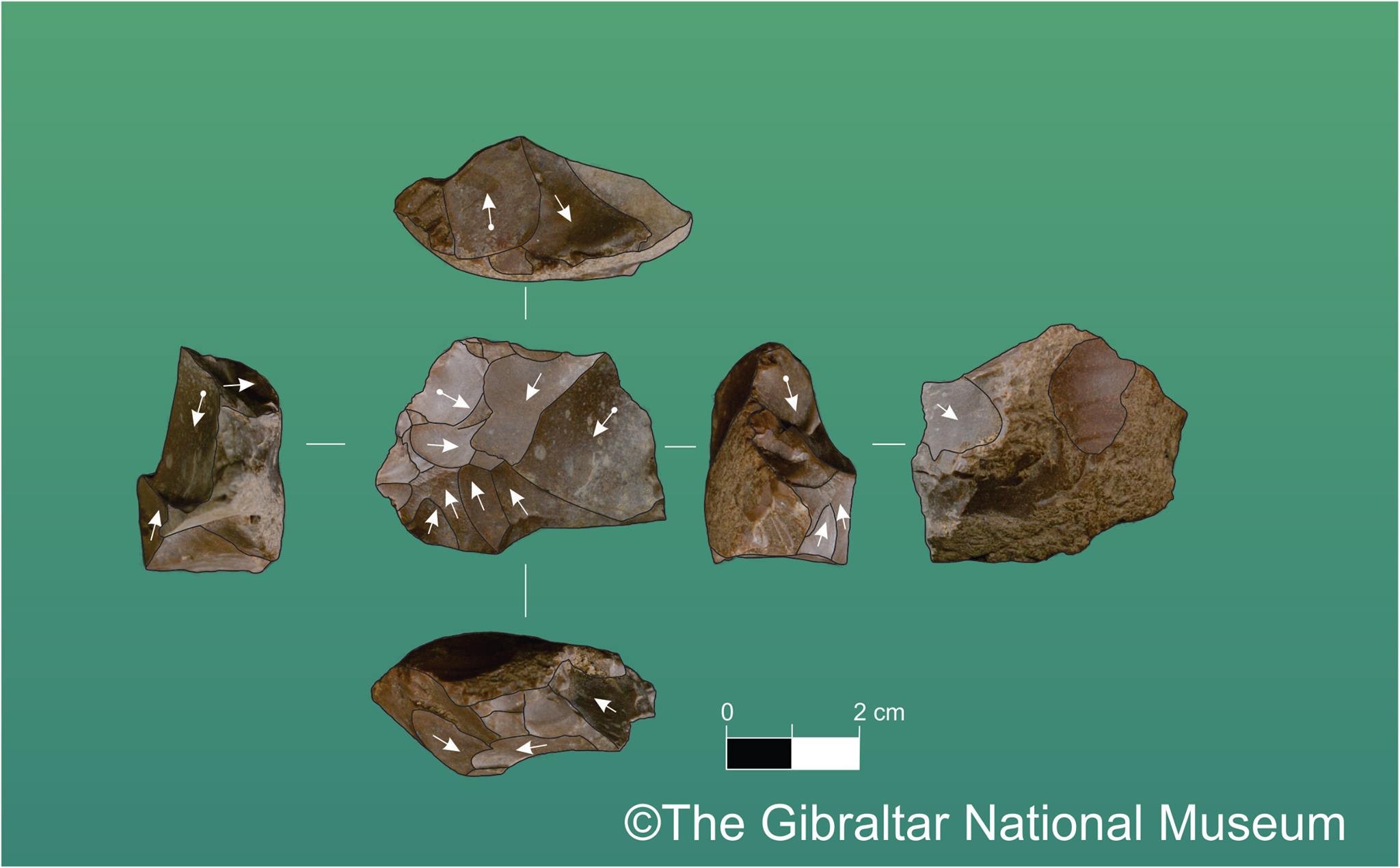An unusual discoid core made by Neanderthals from Gorham’s Cave
An unusual discoid core made by Neanderthals from Gorham’s Cave
One of the things that characterize a Palaeolithic site is the large number of stone tools and the remains of their manufacture that we find in them. This is due to them having been common commodities with large amounts of flakes and waste products produced from their manufacture, and also due to the fact that stone is practically imperishable, unlike other materials such as wood or bone.
One of the common items at these archaeological sites is the stone core. Stone cores are not tools but the raw material that has been knapped (shaped) in order to extract flakes for later use, leaving scars on the core from the different extractions. These negative scars provide very useful information to understand the knapping strategies employed.
A common technique within the stone tool technology most commonly applied by Neanderthals (300,000-32,000 years ago), known as the Mousterian industry, is termed discoid knapping. This knapping technique allows for the extraction of thick variably shaped flakes with triangular sections and the direction of these extractions tend towards the centre of the stone core. Once the stone cores have been reduced following the extraction of the necessary flakes, these usually end in a pyramidal or bi-pyramidal shape.
This technique was usually employed in order to obtain medium-sized flakes between 5 and 10 cm, but in this case, we present an unusual flint core from a 60,000 year old level in Gorham’s Cave, which is rare for its reduced dimensions with extracted flakes of less than 2cm. This variant has been recorded at some sites in northern Iberia but is uncommon in the south.
The small size of these flakes could have been determined by the size of the available pebbles used as raw material or because the knappers where intentionally after smaller tools to carry out precision work.
The arrows in the image show the direction of the different extractions. The pyramidal morphology of the core can also be observed from different perspectives illustrating the discoid knapping technique.
#VirtualMuseum #Gibraltar #GorhamsCave #Mousterian #Neanderthals #StoneTools #Discoid

Published: December 15, 2020
Other similar VM - Archaeology
18-20 Bomb House Lane
PO Box 939,
Gibraltar
